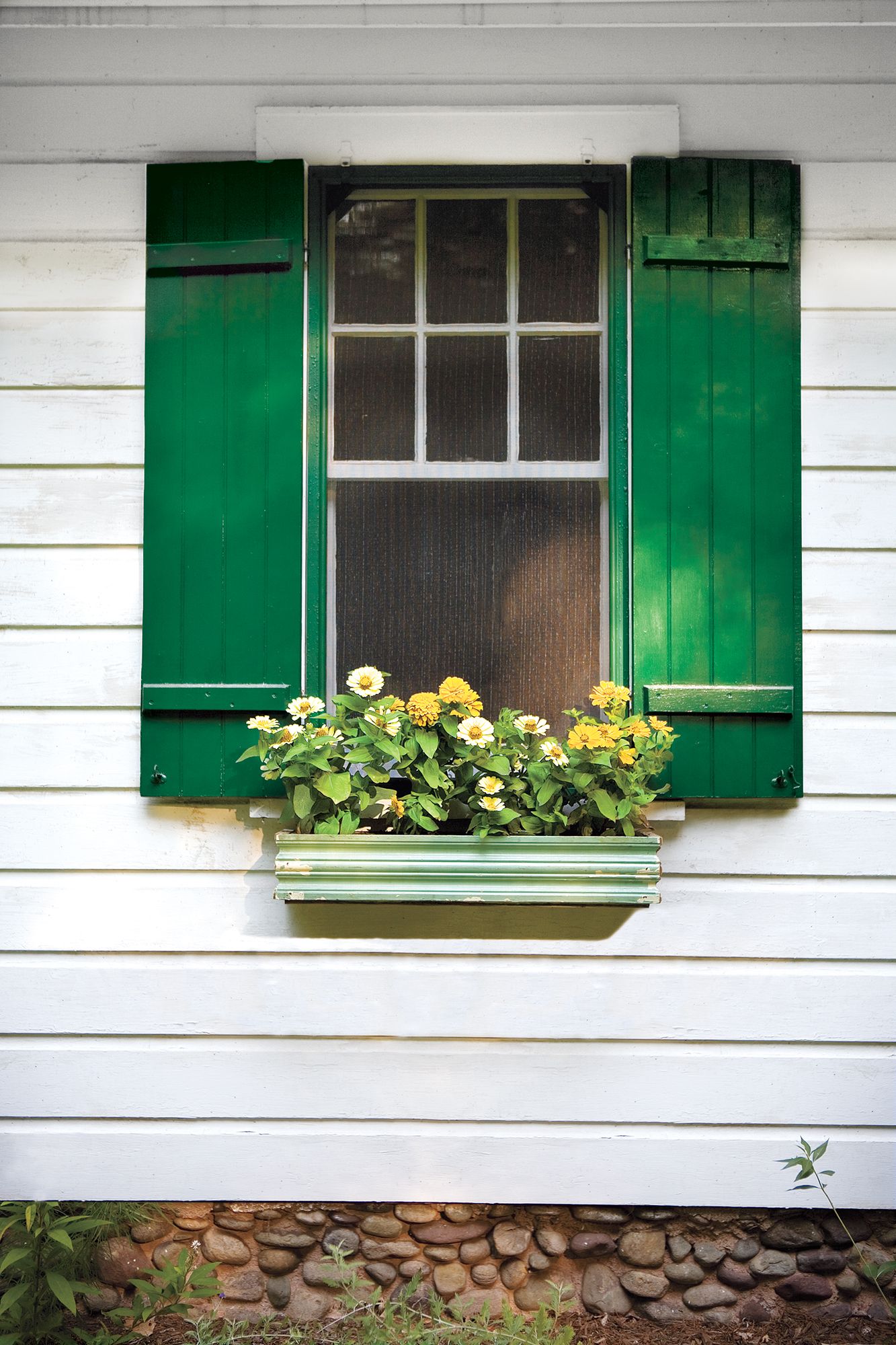Project details
Skill
Cost
Estimated Time
Window boxes can be a charming addition to any home, offering a splash of color and natural beauty to your exterior. Creating a window box with vintage trim adds character to your home while upcycling old materials. This guide will walk you through the process of crafting a unique, cottage-style window box using reclaimed trim and a few simple materials.
*Unless otherwise noted, costs in this article reflect an average of prices that our team found from hardware stores like Lowes and Home Depot, and on Amazon.com.
Step 1: Build a Plywood Frame
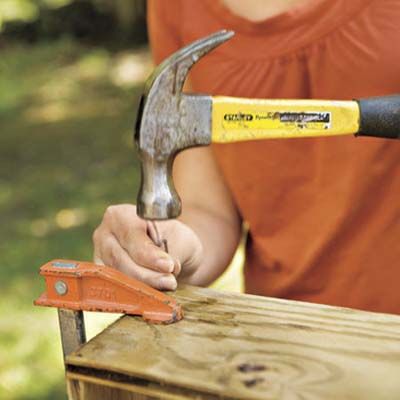
The first step in creating your vintage trim window box is to build a sturdy plywood frame. This frame will serve as the foundation for your window box, providing support for the soil, plants, and decorative trim.
To begin, measure the width of your window and decide on the desired length for your window box. Typically, window boxes look best when they’re slightly narrower than the window itself. Cut a piece of 1/2-inch exterior plywood to these dimensions for the bottom of the box.
Next, cut two side pieces and two end pieces from the same plywood. The height of these pieces should match the width of your vintage trim, which is typically 6–8 inches. The length of the side pieces should be slightly longer than the plastic planter you’ll be using inside the box.
Once you’ve cut all your pieces, it’s time to assemble the frame. Apply water-resistant wood glue to the edges of the bottom piece and attach the sides and ends. Use clamps to hold the pieces in place while the glue dries. For added strength, you can also use galvanized nails or screws to secure the joints.
Quickly check that all pieces align properly. Wipe off any excess glue before it hardens to maintain a cleaner final look. This attention to detail will contribute to a more polished end product.
Step 2: Attach the Bottom of the Frame
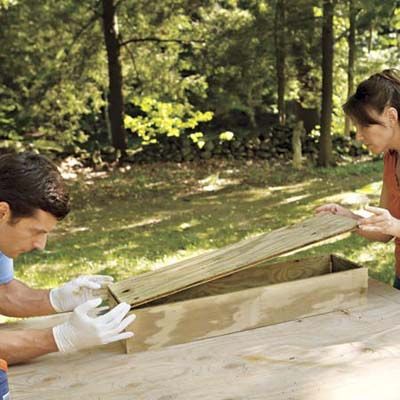
After allowing about 15 minutes for the adhesive to cure, you can attach the bottom of the frame. This step gives your window box proper drainage and stability.
Flip the frame right-side up and place it on a flat surface. Take your plastic planter and insert it into the frame to check the fit. The planter should nest snugly inside the wooden frame without too much extra space around the edges.
If necessary, adjust the frame at this point. You may need to sand down rough edges or add thin strips of wood to create a tighter fit for the planter.
Double-check the balance of the frame to ensure even weight distribution once you fill it with soil and plants to keep it balanced.
Step 3: Add Drainage
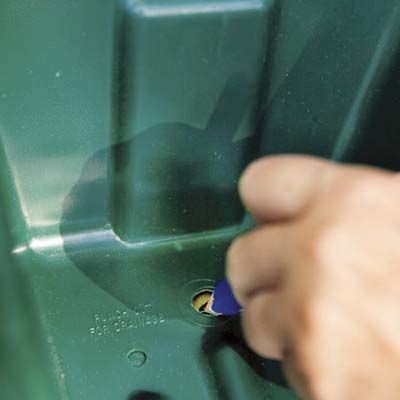
Proper drainage is good for the health of your plants and the longevity of your window box. Without adequate drainage, the soil can get waterlogged, leading to root rot and other plant health issues.
For good drainage, you’ll need to add holes to the bottom of your window box. Start by examining the plastic planter you’ll be using inside the box. Note the location and size of the existing drainage holes.
Using a drill fitted with a 1/2-inch paddle bit, carefully bore holes in the wooden bottom of your frame that correspond to the drainage holes in the plastic planter. Aligning the holes allows excess water to flow freely out of both the planter and the wooden frame.
For added protection against water damage, consider applying a waterproof sealant to the inside of the wooden frame, particularly around the drainage holes. Additionally, you might want to line the bottom of the planter with a layer of small stones or pebbles to further improve drainage and prevent soil from clogging the holes.
Step 4: Determine Molding Lengths
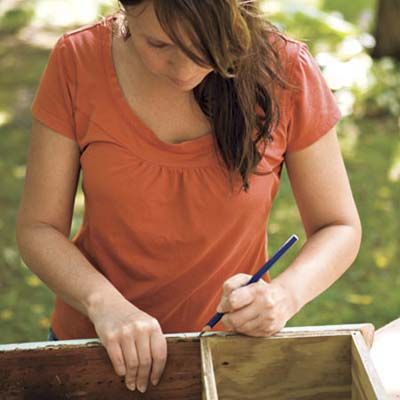
Now that your frame is complete, you can focus on the decorative aspect of your window box — the vintage trim. You’ll need to measure the trim accurately for a polished final product.
Begin by holding a piece of your trim against the plywood frame. Trace cut lines for the front and sides of the window box. Remember, you won’t need a back panel as it won’t be visible once you mount the box.
When measuring, allow for mitered corners where the trim pieces will meet for a seamless professional look. If your trim has an intricate pattern, take care to align it at the corners to make it cohesive
Take into account any irregularities in the trim pattern and adjust your measurements accordingly.
Step 5: Make the Cuts
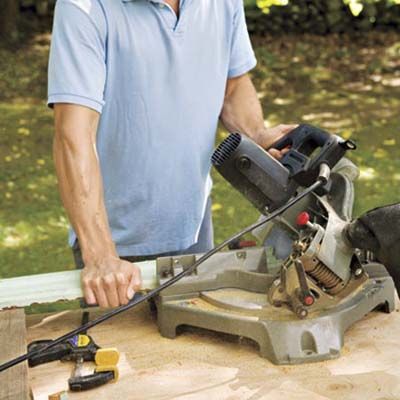
With your measurements in hand, it’s time to cut the vintage trim to size. This step requires precision and patience—take your time.
For the angled corners where the molding pieces intersect, use a miter saw. Set the saw to a 45-degree angle for standard corner joints. If you don’t have access to a power miter saw, you can also use a miter box and handsaw, though this will be a bit more of a challenge.
For the straight cuts at the back of the trim pieces, where they will rest against the house, you can use a standard circular saw or handsaw. Always remember to wear safety goggles and a dust mask when cutting wood, and work in a well-ventilated area.
Step 6: Adhere the Molding
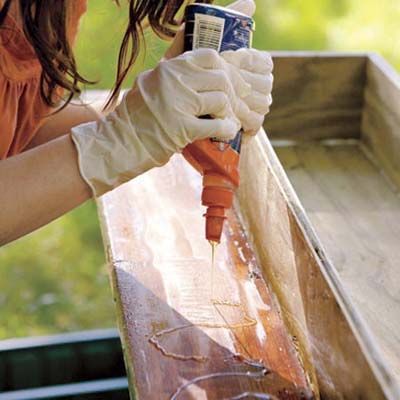
With all your trim pieces cut to size, it’s time to attach them to the plywood frame. This step will transform your basic box into a charming, cottage-style window box.
Start by applying a generous amount of water-resistant wood glue to the backs of the trim pieces. Carefully position each piece on the front and sides of the frame and properly align them. Use clamps to hold the molding in place while the glue cures.
Pay special attention to the corners where the trim pieces meet. Ensure they fit together snugly and that the patterns or designs on the trim line up. If necessary, use painter’s tape to hold the corners together while the glue dries.
Allow the glue to cure according to the manufacturer’s instructions. This typically takes at least a few hours, but for best results, we recommend letting it set overnight. Periodically check the alignment of the trim pieces as they dry to make sure they haven’t shifted.
Step 7: Secure with Nails
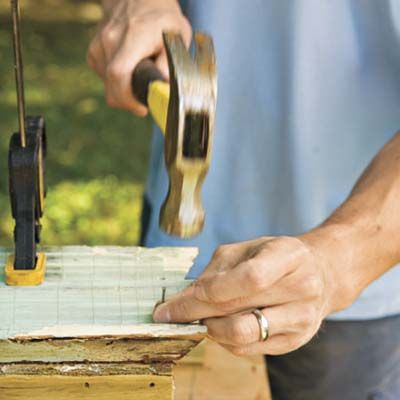
While the glue provides a strong bond, adding nails will ensure your vintage trim stays attached to the plywood frame for good. This step adds extra strength to your window box, helping it withstand the weight of soil, plants, and water.
Using finish nails, carefully tap in fasteners along the top and bottom edges of the molding. Space the nails every 6 to 8 inches for adequate support. Be careful not to split the wood by placing nails too close to the edges.
To achieve a professional finish, use a nailset to recess the nail heads slightly below the surface of the wood. Then, you can fill the nail holes later for a seamless look.
Once all the nails are in place, remove the clamps you used to hold the molding during the gluing process.
Finally, fill any gaps and seams with wood filler or caulk and sand the filled areas lightly once they dry to create a uniform surface ready for finishing.
Step 8: Seal the Finish
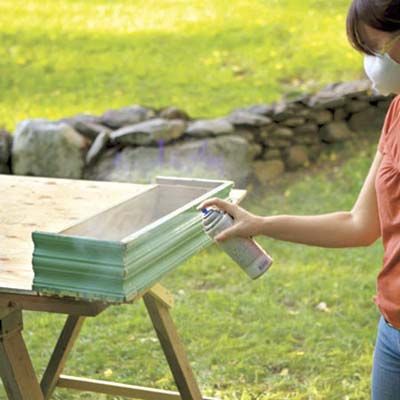
The final step in creating your vintage trim window box is to seal and protect the wood. This step extends the life of your window box, especially since it will be exposed to the elements.
If your vintage trim has old paint on it, check the paint before you seal it. Old paint, particularly on vintage materials, may contain lead, which can be hazardous. You have two options:
- Remove the old finish using a wet stripper, following all safety precautions.
- Seal the old paint under a clear top coat to encapsulate any potential lead.
Once you address any old paint issues, apply a weather-resistant sealer or paint to the entire window box. This will protect the wood from moisture, sun damage, and general wear and tear.
Let the sealer or paint dry completely before planting. Once it is dry, insert your plastic planter, fill it with potting soil, and add your plants. Your new vintage trim window box will now add charm and curb appeal to your home while providing a perfect spot for colorful flowers or herbs.
Creating Window Boxes: Our Conclusion
Creating a window box with vintage trim is a rewarding DIY project that combines craftsmanship with upcycling. With some basic woodworking skills and a bit of creativity, you can transform old trim into a charming, functional piece for your plants.
Tools and Materials To Make a Window Box
 Circular saw
Circular saw Safety goggles
Safety goggles Clamps
Clamps Drill/driver
Drill/driver paddle bit – 1/2-inch
paddle bit – 1/2-inch Miter saw
Miter saw Gloves
Gloves Dust mask
Dust mask Hammer
Hammer Nailset
Nailset
